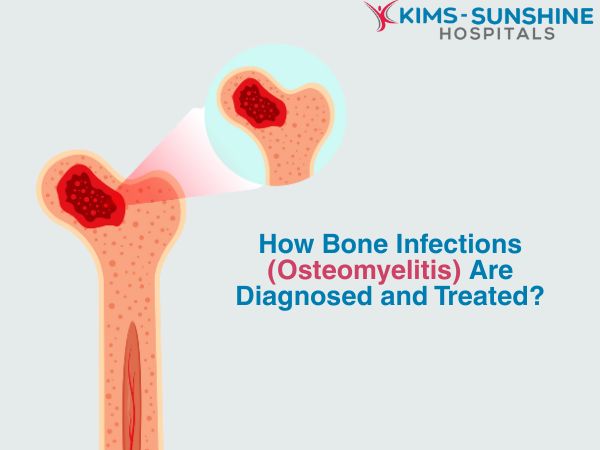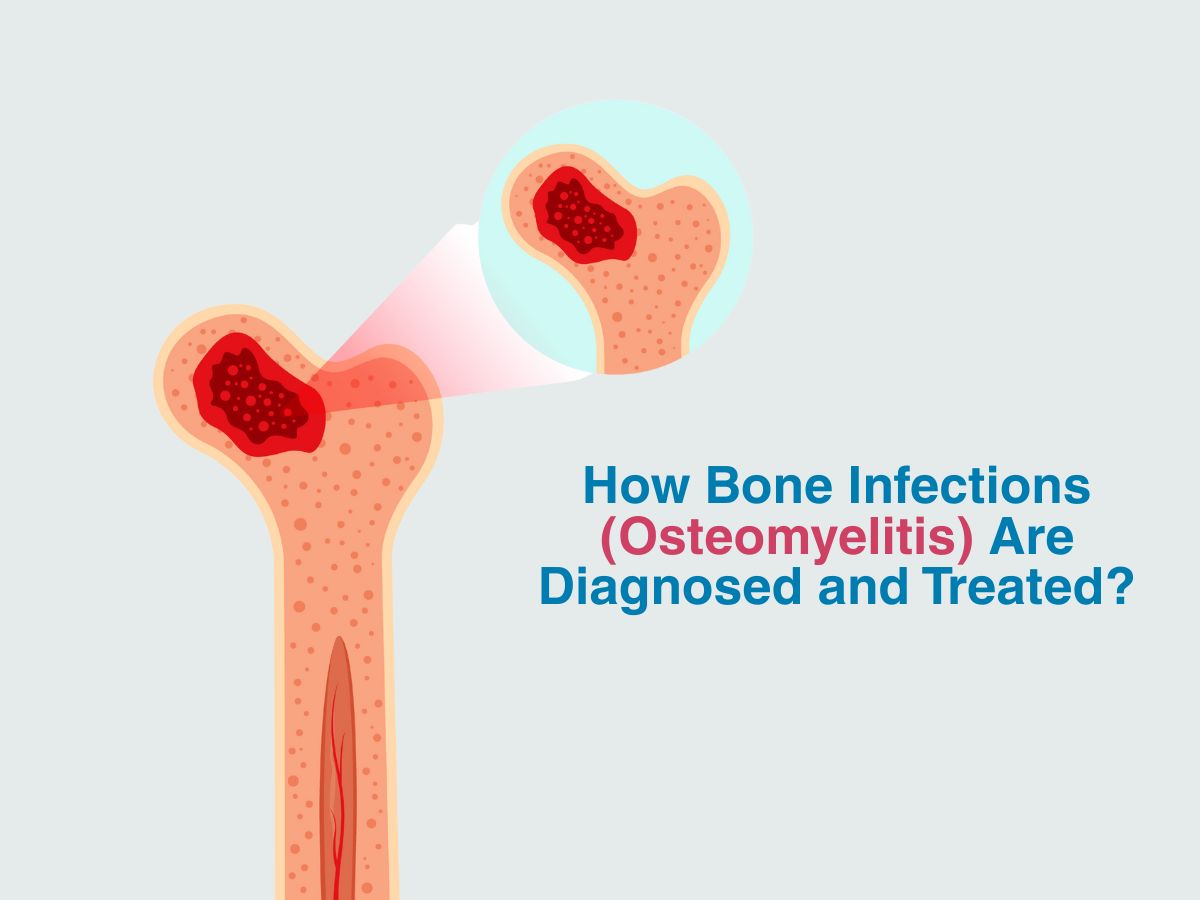
How Bone Infections (Osteomyelitis) Are Diagnosed and Treated?
 Osteomyelitis is a condition where the bone is inflamed or swells up. It can start as an infection from the bone itself or a nearby area which is infected and spreads to the bone. This condition is most commonly seen in young children, below five years, although it can occur at any age too. The male gender is often seen to be more prone to osteomyelitis.
Osteomyelitis is a condition where the bone is inflamed or swells up. It can start as an infection from the bone itself or a nearby area which is infected and spreads to the bone. This condition is most commonly seen in young children, below five years, although it can occur at any age too. The male gender is often seen to be more prone to osteomyelitis.
Signs and symptoms of bone infection
Osteomyelitis shows some signs and symptoms which may include:
- Tenderness, warmth, and swelling over the site of infection
- Difficulty moving joints near the affected area
- Irritability in infants who can’t express pain
- Pain near the area of infection
- Tiredness
- Fever
However, there are instances when osteomyelitis shows no symptoms or it may show symptoms similar to those occurring in other conditions.
How is osteomyelitis diagnosed
Your healthcare provider might feel the area around the infected bone for tenderness, warmth, or swelling. If there is a foot sore, you may be checked using a probe to assess how close it is to the underlying bone. Other than a physical examination, there are certain blood tests, imaging tests, and bone biopsy that needs to be done in order to evaluate the condition.
- Blood tests: A blood test can ascertain if there is an infection as then there would be elevated levels of white blood cells in the blood to fight against the infection. The germ causing the infection can also be detected through blood tests.
- Imaging tests: Some of the imaging tests used to detect bone infection include X-ray, MRI scan, CT scan, and bone scan. While X-rays show damage to a bone, MRI scans capture detailed images of bones and soft tissues around them. A CT scan is used to take images from different angles of the bone while a bone scan makes use of radioactive tracers that are taken up by the infected site and appear on the scan.
- Bone biopsy: A bone biopsy identifies the infection-causing germ which makes it easier for your healthcare provider to give you antibiotics specific to that microorganism. Generally, there are two types of bone biopsies- open biopsy and needle biopsy.
Osteomyelitis treatment without surgery
Osteomyelitis recovery time and care varies from one individual to the other. In some cases, such as in diabetics, it is difficult to heal bone infections completely. Most often, a surgical intervention is necessary to treat chronic osteomyelitis. Later on, the best antibiotics for bone infection may be given intravenously but first, it is vital that dead and infected parts of the bone be removed surgically.
Surgery for chronic osteomyelitis
If osteomyelitis becomes chronic, it is treated through surgery. First, the infected bone must be drained of any pus or fluid caused due to infection. Once this is done, the surgeon removes as much of the diseased bone as possible. This procedure is called debridement. Finally, the empty space caused by the debridement procedure is filled with skin, muscle, or tissue from another part of the body. Sometimes, the surgeon puts temporary fillers in the empty space till the time you are healthy enough for a bone or tissue graft. The graft will help the body repair damaged blood vessels and lead to new bone formation.
Conclusion
Diagnosing bone infection in diabetic people can be tricky. As with other types of bone infections, it usually takes a couple of weeks until the infection is apparent on diagnostic radiographs. By then sufficient bone loss has already occurred. Also, diabetic patients often suffer from peripheral neuropathy which masks some of the symptoms of infection.






